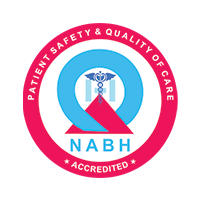The Role of Physical Therapy in Knee Replacement Recovery

Undergoing knee replacement surgery is a significant milestone in the journey toward regaining mobility and alleviating chronic pain. But what comes next? How do you ensure that your new knee functions optimally and you get back to your daily activities as soon as possible? The answer lies in a comprehensive and well-structured physical therapy program. If you've been exploring the best knee replacement hospital in Pune or anywhere else, it's crucial to understand the pivotal role physical therapy plays in your recovery.
Understanding Knee Replacement Surgery
Knee replacement surgery, or knee arthroplasty, involves replacing the damaged or diseased parts of the knee joint with artificial components. This procedure is often recommended for patients suffering from severe arthritis or significant injury where other treatments have failed to provide relief. The primary goals of knee replacement are to relieve pain, restore function, and improve the quality of life.
However, the success of the surgery doesn't solely depend on the surgical procedure itself. Post-operative care, particularly physical therapy, is vital to achieving optimal outcomes.
The Importance of Physical Therapy Post-Surgery
1. Restoring Mobility and Flexibility
One of the immediate goals of physical therapy following knee replacement surgery is to restore the knee's range of motion. Swelling and pain can significantly reduce mobility, making it challenging to perform even basic movements. A tailored physical therapy regimen helps to gradually improve flexibility and ensure the knee can bend and straighten effectively.
2. Strengthening Muscles
The muscles around the knee, including the quadriceps and hamstrings, often weaken after surgery due to reduced activity. Physical therapy focuses on strengthening these muscles, which provides better support for the new knee joint, enhances stability, and reduces the risk of future injuries.
3. Improving Balance and Coordination
Balance and coordination can be significantly affected after knee replacement surgery. Physical therapists employ various exercises to improve these aspects, which are crucial for activities such as walking, climbing stairs, and even standing up from a seated position.
4. Pain Management
While pain is an inevitable part of the recovery process, physical therapy offers techniques to manage and reduce it effectively. Through controlled movements and specific exercises, physical therapy can alleviate pain and minimise dependence on pain medications.
5. Speeding Up Recovery
A structured physical therapy program can significantly speed up the recovery process. It ensures that patients regain their independence faster and return to their daily routines with minimal discomfort.
What to Expect in a Physical Therapy Program
Initial Assessment
The physical therapy journey typically begins with an initial assessment, where the therapist evaluates the patient's current physical state, including pain levels, range of motion, and muscle strength. This assessment helps in crafting a personalized therapy plan tailored to the patient's specific needs.
Early Post-Operative Phase
In the early stages post-surgery, the focus is on gentle exercises that promote circulation and prevent blood clots. Simple movements like ankle pumps, leg lifts, and knee bends are introduced. The therapist also emphasises the importance of proper posture and safe movement techniques to protect the new joint.
Progressive Strengthening and Flexibility Exercises
As the patient progresses, the intensity of exercises increases. This phase includes more rigorous strength training and flexibility exercises. Activities like cycling on a stationary bike, leg presses, and step-ups are common. Stretching exercises are also incorporated to maintain and improve the knee's range of motion.
Balance and Proprioception Training
Balance and proprioception training becomes crucial as the patient regains strength. These exercises help in improving the body's ability to sense the position of the knee joint, enhancing overall stability and reducing the risk of falls.
Functional Training
Functional training focuses on real-world activities that the patient performs daily. This can include walking on different surfaces, climbing stairs, and practising getting in and out of a car. The goal is to ensure the patient can perform these activities with confidence and without pain.
The Role of the Patient in Physical Therapy
While physical therapists guide and assist in the recovery process, the patient's active participation is crucial. Consistency in performing prescribed exercises, following safety guidelines, and maintaining a positive attitude greatly influence the outcomes. Communication with the therapist is also important to address any concerns or adjust the therapy plan as needed.
Conclusion
Physical therapy is an indispensable part of the knee replacement recovery process. It not only helps restore mobility and strength but also ensures that patients can return to their normal lives with minimal pain and maximum function. If you are considering knee replacement surgery, especially at a knee replacement hospital in Pune and other places in Maharashtra, make sure to inquire about their physical therapy programs and how they can assist in your recovery journey. By committing to a structured and personalised physical therapy regimen, you can look forward to a smoother, faster, and more successful recovery.








